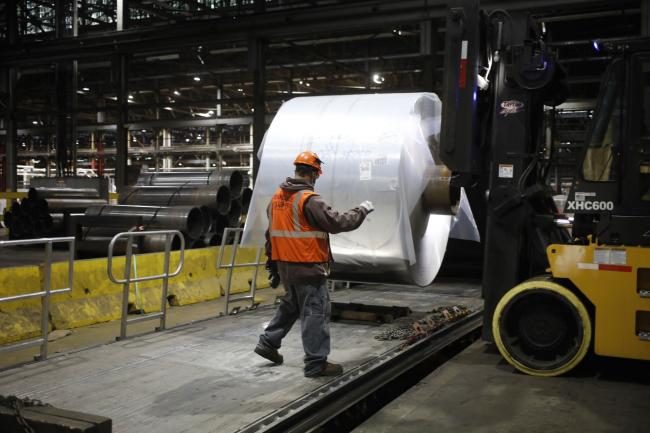(Bloomberg) -- The U.S. jobs market has never been tighter than it is today, increasing the risks to the economy as Federal Reserve policy makers move to rein in inflation, according to Goldman Sachs Group Inc (NYSE:GS).
The Wall Street bank’s economists have compiled a gauge of U.S. labor that they say better tracks wage gains -- which are key to inflationary pressures -- than other measures. They add the total number of employees and the number of job openings to estimate labor demand. For supply, they count the labor force, or people in work and those looking for positions.
The latest reading of the gap shows an excess of 5.3 million in labor demand versus supply of workers -- “the most overheated level of the postwar period both in absolute terms and relative to the population,” Jan Hatzius, Goldman’s chief economist, wrote in a note Monday.
Much of the continued strong employment growth that’s likely in coming months will come from people who are currently outside the labor force -- something that will help ease this jobs-to-workers gap, Hatzius wrote. That will happen as Americans living off of savings work down their stockpiles, he said.
“The bad news, however, is that this is probably not sufficient,” Hatzius wrote. “In order to reduce wage pressure to levels at least broadly consistent with the Fed’s inflation target, we estimate that the gap needs to shrink by at least one-half.”
Fed policy makers target 2% inflation, and the most recent reading for the central bank’s preferred core gauge was 5.4%. As for wages, Friday’s March jobs report showed a 6.7% annual advance for production and non-supervisory employees, the biggest since 1982 after excluding spring 2020 distortions from the pandemic shutdown.
Given the magnitude of tightness, Hatzius warned of three potential consequences:
- It may take economic growth slowing to the 1% to 1.5% range to bring down inflation
- “This will probably require a significant tightening in financial conditions,” he said, referring to a measure that includes equities and corporate debt
- “It could well mean a higher terminal funds rate than our baseline forecast of 3%-3.25%,” he said, referring to where the Fed’s policy rate -- currently a 0.25%-0.5% range -- peaks after interest-rate increases
Hatzius also noted that, historically, there has never been a loosening in the job market on the order of 0.6% of the labor force -- “a share that would correspond to about 1 million at present” -- that wasn’t connected with a recession.
Similarly worrying, the U.S. unemployment rate -- at 3.6% currently, practically its pre-pandemic level -- has never risen more than 0.35 percentage point over three months without a recession.
Despite the alarming record, Hatzius takes heart from the fact that the sample size is small, at just 12 U.S. recessions since the end of World War II. He also said that episodes in other big economies showed moderate labor-market deterioration can occur without economic slumps.
Also encouraging: there are few signs of the kind of financial imbalances among American households and companies that were seen in the run-up to the 2001 and 2007-09 slumps.
Still, “the broader point is that once the labor market has overshot full employment, the path to a soft landing becomes narrow,” Hatzius concluded.
Read More: Fed’s Best Hope Increasingly Looks Like a ‘Semi-Hard’ Landing
©2022 Bloomberg L.P.
